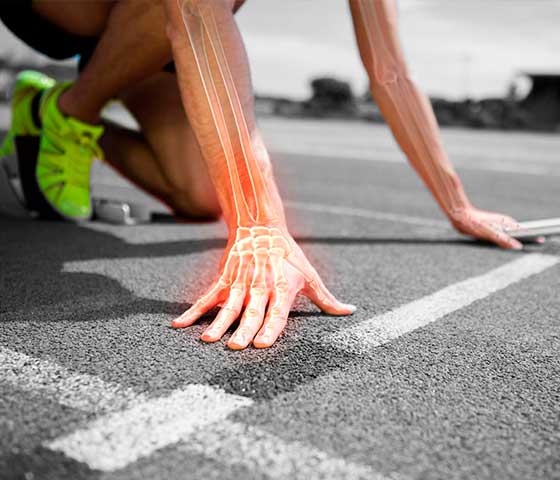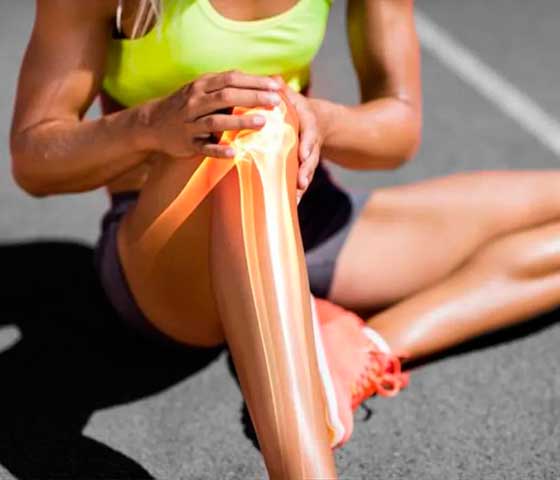Sports injuries occurs during sporting activities or exercise. They can result from accidents, poor training practices, improper gear, inadequate warm-up, or lack of conditioning. Sports injuries can affect various parts of the body, including muscles, tendons, ligaments, joints, and bones.

Commonly caused by overuse, direct impact, or the application of force that is greater than the body part can structurally withstand. Sports injuries are divided into two broad categories, acute and chronic injuries. Acute injuries happen suddenly, such as when a person falls, receives a blow, or twists a joint, while chronic injuries usually result from overuse of one area of the body and develop gradually over time.
Symptoms of an acute injury include:
- Sudden, severe pain.
- Extreme swelling or bruising.
- Not being able to place weight on a leg, knee, ankle, or foot.
- Not being able to move a joint normally.
- Extreme weakness of an injured limb.
- A bone or joint that is visibly out of place
Symptoms of a chronic injury due to overuse include:
- Pain when you play or exercise.
- Swelling and a dull ache when you rest.
After the injury has healed, you may need to complete a rehabilitation program before returning to the activity that caused the injury. At Revolve, our physiotherapists will make a plan aimed at rebuilding strength and range of motion of the injured part of the body, and easing any residual pain.
Take these steps to avoid sports injuries:
Warming up: Warm up thoroughly by gently going through the motions of your sport and performing slow, sustained stretches.
Use the proper technique: Learn the proper way to move during your sport or activity. Different types of exercise require different stances and postures. For example, in some sports, bending your knees at the right time can help avoid an injury to your spine or hips.
Have the proper equipment: Wear the right shoes. Make sure you have the proper athletic protection. Ill-fitting shoes or gear can increase your risk for injury.
Don’t overdo it: If you do get hurt, make sure you’re healed before you start the activity again. Don’t try to “work through” the pain.
The best way to prevent a sports injury is to warm up properly and stretch. Cold muscles are prone to overstretching and tears. Warm muscles are more flexible. They can absorb quick movements, bends, and jerks, making injury less likely.
Treatment & Rehabilitation

One of the most important aspects of rehabilitating a sports injury is treating it as soon as possible. Your treatment plan and duration of recovery will vary depending on how severe the injury is, your health history, and whether or not the injury requires surgical intervention.
Treatment for sports injuries varies depending on the type and severity of the injury but may include rest, ice, compression, elevation (RICE), physical therapy, bracing, medication, or surgery. Prevention strategies such as proper warm-up, stretching, using appropriate gear, maintaining good conditioning, and avoiding overtraining can help reduce the risk of sports injuries.
Sports injuries treatment at Revolve Physiotherapy in Milton. Call us now 905 864.8181 and talk to a Specialist.
